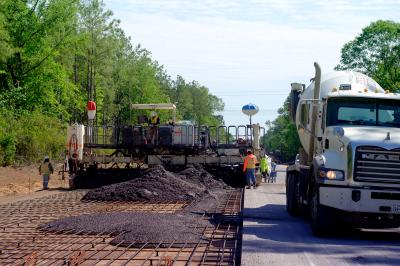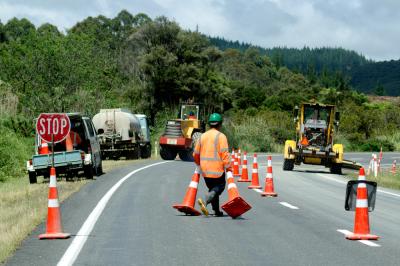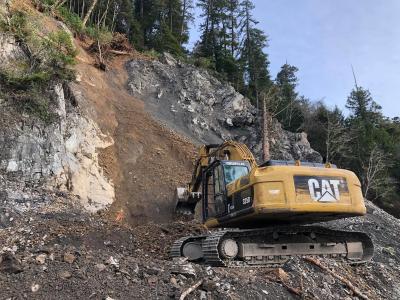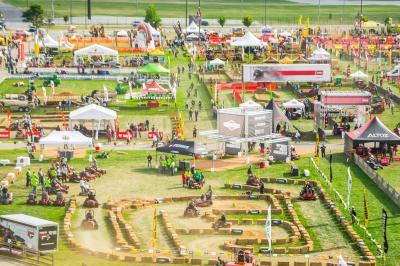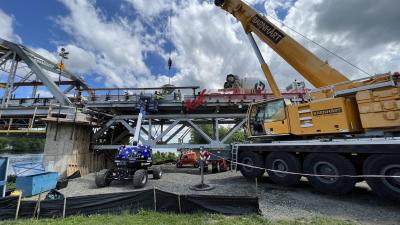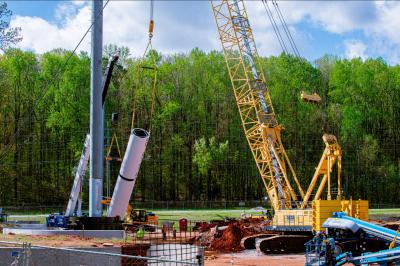October represented an important month for Los Angeles County highway construction, as a nearly $114 million high occupancy vehicle (HOV) lane project along State Route 60 was completed and a $140 million HOV lane project on Interstate 5 broke ground.
The $140.2 million project on I-5 will build nearly 7 mi. (11.3 km) — 3.4 mi. (5.5 km) in each direction — of new bus/carpool lanes between the Ronald Reagan Freeway (SR-118) and the Hollywood Freeway (SR-170). The project’s general contractor Flatiron West also will reconstruct the I-5/SR-170 connector, replace sections of concrete pavement, and widen four under crossings.
“I-5 is the backbone of the state’s freeway system,” said Caltrans District 7 Director Mike Miles, adding this improvement project will significantly advance mobility within this important corridor.
The project is slated for a spring 2015 completion.
On Oct. 14 Caltrans announced the completion of the $113.9 million State Route 60/Pomona Freeway project by inaugurating 11.5 mi. (18.5 km) of new HOV lanes.
The seven-stage, SR-60 project involved constructing one westbound and one eastbound HOV lane from the Route 57/60 Interchange to the Route 605/60 Interchange — an 11.5 mi. stretch of heavily traveled freeway — without eliminating existing lanes of traffic.
The project also included construction of sound walls, the widening of numerous on- and off-ramps and some bridgework.
Beginning in June 2007 construction crews began work on stage one of the project, which included the construction of 24 sound walls and retaining walls; the widening of two bridges; the retrofitting of two bridges; and the demolition of two pedestrian over-crossings, according to Tim Wilson, project executive for Skanska USA Civil West, the prime contractor and lowest qualified bidder.
Following sound wall and bridge work, stage one also involved widening the existing SR-60 eastbound shoulder from 8 to 10 ft. (2.4 to 3 m) along the entire 11.5-mi. stretch.
During construction, specialty equipment used included a pipe boring machine, asphalt pulverizers, hoe ram excavators, Hyram backhoe breakers, and a Lo-Drill attachment for CIDH piles, according to Wilson.
Stage two of the project was broken into a “West” and “East” portion, with widening the westbound shoulder of SR-60 by 2 ft. (0.6 m) being the focus of the “West” portion.
Once the westbound shoulder widening was complete, construction crews began work on the “East” half of the second stage, which included the removal of the existing eastbound median barrier rail and asphalt shoulder to make way for the eastbound HOV lane.
Following removal of the barrier rail and shoulder, crews constructed a new concrete pavement roadway section, which now serves as the eastbound HOV lane, and installed new barrier rails.
Aside from specialty equipment, other equipment used on the project included: Caterpillar 950 and 966 loaders, 330 excavators, 446 backhoes, Bobcat 328 and Caterpillar 314 excavators, Commander III/Gomaco 2500 paving machines, 45-ton truck cranes, 35-ton rough terrain cranes, 613 scrapers, manlifts, bottom dumps, ten wheelers, super 10s, forklifts, boom trucks and traffic control trucks.
Stage three of construction represented the first of four, 60-day ramp closures.
Each stage of ramp closures affected specific on- and off- ramps along a certain portion of the 11.5-mi. stretch.
The closures ensured that the elevated ramps would be reconstructed so they tied into the newly widened portions of freeway.
Following the 60-day ramp closures, westbound median construction occurred, which consisted of barrier removal and roadway excavation of the existing median asphalt concrete — similar to what occurred along the eastbound portion of freeway during stage two.
Stage seven also involved construction of the westbound HOV lane and the installation of new barrier railing.
Wilson said at its peak, the project had 130 to 150 craft union personnel onsite.
Because more than half of the 11.5-mi. stretch of SR-60 was bordered by a heavy industrial and commercial area, and another portion of freeway was bordered by neighborhoods and schools, continuous public outreach and coordination among subcontractors was necessary to mitigate traffic impacts and allow construction to continue.
“The most challenging issue for the project was to maintain existing public traffic with minimum impact or delays,” said Maria Raptis, public information officer of Caltrans District 7.
Raptis added that the amount of time, effort, communication, and coordination needed to reconstruct nearly 12 mi. (19.3 km) of freeway — with little disruption — was a task in itself.
Throughout construction the contractors involved also dealt with other challenges including tight work spaces — one reason night crews worked on the project since construction began in June 2007.
Despite tight workspaces, finding staging areas for equipment wasn’t a problem, as contractors maintained an onsite storage area, Wilson said, adding contractors also used the contour areas of ramps to store equipment.
Environmental issues involving stormwater pollution prevention, dust control, nesting birds, deer, and protected plants and trees represented another challenge throughout the project.
In total, the amount of materials used to complete the project included: 115,000 cu. yds. (87, 924 cu m) of concrete pavement and lean concrete base; 380,000 sq. ft. (317,728 sq m) of sound wall masonry block; 93,000 linear ft. (28,346.4 linear m) of concrete barrier; 1.3 million lbs. (589,670 kg) of overhead sign structures; 91,861 linear ft. (27,999 linear m) of 16 in. (40.6 cm) diameter CIDH piles; 235,000 linear ft. (71,628 linear m) of temporary K-Rail; 2.3 million lbs. (1,043,262 kg) of reinforcing steel; 227,000 cu. yds. (173,554 cu m) of roadway and structure excavation; and 162,000 cu. yds. (123,858 cu m) of structural concrete.
Between roadway and structure excavation work, 165,000 cu. yds. (126,151 cu m) of earth was moved.
Interstate 5 in the San Fernando Valley and Los Angeles County experiences an average daily traffic volume that can exceed 300,000. Currently, there are 492 mi. (792 km) of HOV lanes in Los Angeles County, which represents 34 percent of all such lanes in the state.
Today's top stories



